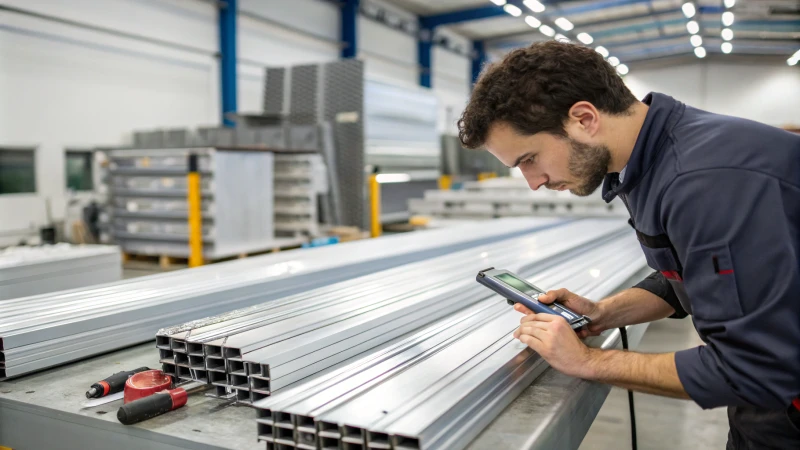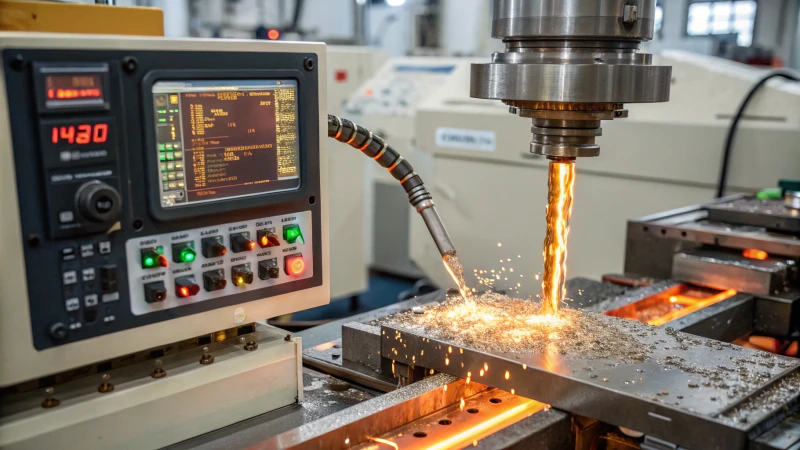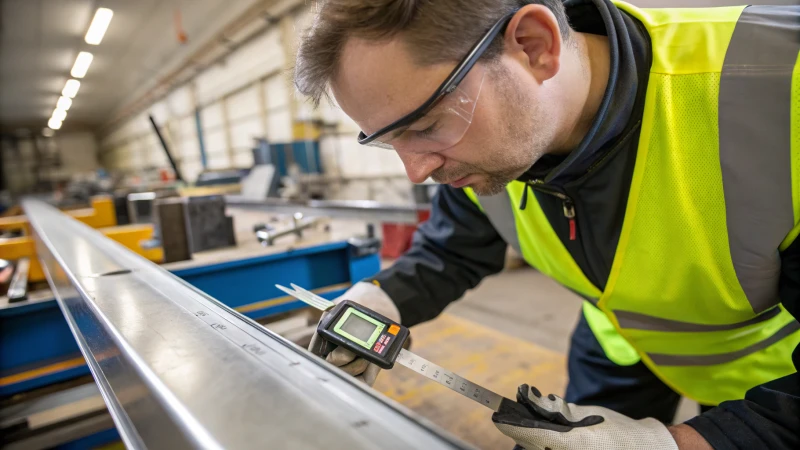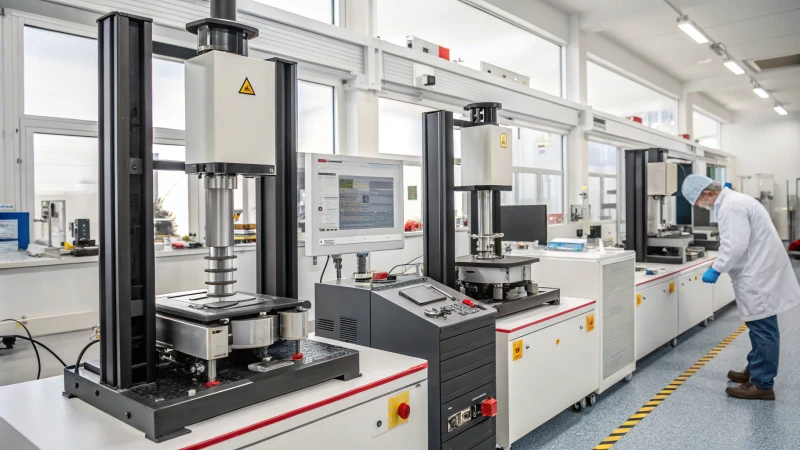Detailed Quality Inspection Process in Aluminum Profile Production

Quality is paramount in aluminum profile production, where precision and durability define success. Dive into the comprehensive inspection process that guarantees top-tier products.
The quality inspection process in aluminum profile production involves several stages, including raw material inspection, extrusion process control, profile dimension checks, surface quality assessments, mechanical properties testing, and final packaging inspection. Each stage ensures that aluminum profiles meet stringent specifications and industry standards.
While this summary provides an overview, each stage of the inspection process is intricate and demands attention to detail. Let’s explore how these inspections are performed and why they are crucial for delivering high-quality aluminum profiles.
Raw material inspection ensures aluminum purity.True
Inspecting raw materials is crucial to maintain aluminum purity.
Final packaging inspection is skipped in the process.False
Final packaging inspection is essential for product quality assurance.
How Do Raw Material Inspections Ensure Quality in Aluminum Profiles?
Raw material inspections are crucial in maintaining the quality of aluminum profiles, ensuring they meet stringent specifications. These inspections help identify potential issues early, safeguarding the integrity of the final product.
Raw material inspections in aluminum profile production involve verifying alloy composition and checking for surface defects. This ensures that materials meet quality standards, preventing issues that could affect the final product’s performance and durability.

Alloy Verification: The First Step
Ensuring the correct aluminum alloy is used is paramount. This involves reviewing the supplier’s certificate of analysis and performing chemical composition tests. Deviations in alloy composition can compromise the strength
and durability of the final profiles.
Surface Condition Checks
Inspecting aluminum billets for visible defects such as cracks, corrosion, or dirt is vital. Any contaminants can impact extrusion quality. A clean billet surface guarantees optimal performance in subsequent manufacturing processes.
Chemical Composition Testing
A thorough chemical analysis ensures that the aluminum’s composition aligns with industry standards. This testing helps confirm that each batch adheres to specifications, reducing the risk of failures in mechanical properties.
| Inspection Aspect | Key Criteria |
|---|---|
| Alloy Verification | Compliance with specifications |
| Surface Condition | Free from cracks and corrosion |
| Chemical Composition Tests | Consistent alloy formulation |
These inspections form a critical part of a broader quality assurance framework. Ensuring raw materials meet defined criteria minimizes risks and enhances overall production efficiency, paving the way for high-quality, reliable aluminum profiles.
Alloy verification is the final step in quality assurance.False
Alloy verification is the first step, not the final one.
Surface defects can affect aluminum extrusion quality.True
Surface defects like cracks or dirt can hinder extrusion quality.
What Role Does Extrusion Process Control Play in Quality Assurance?
Extrusion process control is crucial in maintaining quality standards for products ranging from aluminum profiles to plastic components. It involves monitoring and adjusting various parameters to ensure consistent output, thus playing a significant role in quality assurance.
Extrusion process control ensures consistent product quality by regulating critical parameters like temperature and pressure. This prevents defects and aligns with industry standards, vital for applications demanding precision and reliability.

Understanding Extrusion Process Control
Extrusion process control is a vital component in manufacturing, where materials are forced through a die to create specific shapes. Key parameters such as temperature, pressure, and speed need to be meticulously managed to ensure the final product meets quality standards.
The importance of this control is especially evident in the production of aluminum profiles, where deviations can lead to material weaknesses or dimension inaccuracies. By keeping these parameters within specified ranges, manufacturers can avoid defects such as warping or uneven surfaces.
The Impact on Product Quality
Effective control over the extrusion process directly impacts the quality of the final product. For instance, maintaining the correct temperature ensures proper material flow, while consistent pressure helps achieve uniform thickness. These factors are particularly critical in industries where precision is paramount.
| Parameter | Importance | Common Issues Solved |
|---|---|---|
| Temperature | Proper material flow | Prevents warping and distortion |
| Pressure | Uniform thickness | Avoids dimension inaccuracies |
Monitoring and Adjustments
Modern extrusion processes often involve automated systems that continuously monitor parameters using sensors. These systems can make real-time adjustments to maintain optimal conditions, thus reducing human error.
In addition to technological solutions, regular inspections of equipment such as dies are essential. This proactive approach helps identify potential issues before they affect production quality. Continuous improvement in process control strategies is a hallmark of successful manufacturing operations.
Compliance and Standards
Adhering to industry standards is another critical aspect where extrusion process control plays a pivotal role. Manufacturers must ensure that their processes align with regulations regarding safety and quality. This compliance is often verified through certifications that require strict adherence to prescribed processes.
Understanding the role of quality certifications can offer insights into how process control supports compliance efforts. Such certifications not only assure quality but also enhance market competitiveness.
Overall, extrusion process control is integral to achieving consistent product quality and meeting industry standards. By focusing on critical parameters, implementing advanced monitoring systems, and ensuring compliance, manufacturers can significantly enhance their quality assurance protocols.
Extrusion process control prevents product warping.True
Proper temperature management during extrusion prevents material warping.
Automated systems in extrusion increase human error.False
Automated systems reduce human error by making real-time adjustments.
Why Are Profile Dimensions Critical in Quality Inspections?
Ensuring the precise dimensions of profiles in quality inspections is vital for maintaining product integrity and functionality. Accurate measurements prevent costly errors and ensure compatibility with design specifications, particularly in industries like construction and manufacturing.
Profile dimensions are crucial in quality inspections because they ensure the product meets design specifications and functions properly. Accurate measurements prevent defects, enhance performance, and guarantee customer satisfaction.

Importance of Dimensional Accuracy
In industries like aerospace, automotive, and construction, even minor deviations in profile dimensions can lead to significant issues. For instance, an aluminum profile used in construction must fit precisely to maintain structural integrity and safety. This accuracy is not just about meeting specifications but also ensuring parts function seamlessly with other components.
Tools and Techniques for Measurement
To achieve precise measurements, various tools are employed. Calipers, micrometers, and laser measuring devices are common tools that offer high precision. The choice of tool often depends on the profile’s complexity and required tolerance levels. For example:
| Tool | Precision Level | Best For |
|---|---|---|
| Calipers | Moderate | Basic profiles |
| Micrometers | High | Small, intricate details |
| Laser Measuring Devices | Very High | Large-scale and complex profiles |
Impact on Product Quality
Maintaining exact dimensions is critical for ensuring product quality. A deviation might lead to misalignment or failure under stress, impacting the product’s overall performance. This is particularly true for products like outdoor equipment where durability is essential.
Dimensional Tolerances
Dimensional tolerances are the acceptable limits of variation in a physical dimension. These tolerances must be adhered to ensure that parts can be assembled correctly. Tighter tolerances often mean higher production costs but result in superior product quality. Understanding these tolerances can significantly improve quality inspections and help achieve consistent results across batches.
Integrating Technology in Inspections
With advances in technology, automated systems now play a significant role in inspecting profile dimensions. Systems using AI and machine learning analyze data faster and more accurately than traditional methods. This leads to quicker decision-making processes, allowing manufacturers to rectify issues before they escalate into larger problems.
For a comprehensive view of technological integration in quality inspections, exploring industry case studies can provide valuable insights.
Conclusion Placeholder
This section would typically conclude by summarizing the critical role that dimensional accuracy plays in quality inspections, highlighting both technological advancements and traditional practices that ensure precision and consistency in production.
Profile dimensions affect product structural integrity.True
Precise dimensions ensure parts fit correctly, maintaining safety and performance.
Calipers provide the highest precision in measurements.False
Calipers offer moderate precision; laser devices are more precise for complex profiles.
How is Surface Quality Assessed in Aluminum Profile Production?
Understanding surface quality in aluminum profiles is crucial for ensuring both aesthetic appeal and functional integrity. Here’s how manufacturers meticulously assess and maintain high standards throughout production.
Surface quality in aluminum profile production is assessed through visual inspections, surface roughness tests, and coating evaluations. These methods ensure profiles meet both functional and aesthetic standards, crucial for high-quality end products.

Visual Inspection Techniques
Visual inspection is the first line of defense in identifying surface imperfections in aluminum profiles. Inspectors look for scratches, dents, or discolorations, which can affect both the appearance and performance of the final product. This step is critical for applications where aesthetic quality is paramount.
Measuring Surface Roughness
Surface roughness is quantified using a profilometer. This device measures the microscopic peaks and valleys on the profile’s surface. The results help determine if the profile meets the required roughness standards, which can impact functionality and durability.
Example Surface Roughness Values
| Profile Type | Roughness (µm) |
|---|---|
| Architectural | 0.8 |
| Industrial | 1.2 |
| Automotive | 0.5 |
Coating Consistency Checks
If profiles undergo anodizing or powder coating, the consistency of these coatings is evaluated. Inspectors check for uniform color and thickness to ensure that coatings provide adequate protection and aesthetic appeal.
Coating consistency is verified using tools like film thickness gauges, which measure coating thickness accurately.
Testing for Surface Defects
Surface defects are often detected through advanced techniques such as dye penetrant testing, which reveals cracks and other subsurface imperfections that might not be visible to the naked eye. This method is particularly useful in ensuring the structural integrity of profiles used in critical applications.
Assessing Anodizing Quality
The quality of anodizing is assessed by checking color uniformity and coating thickness. This is crucial for applications where corrosion resistance is necessary. Anodizing also impacts the profile’s ability to withstand environmental factors like UV exposure.
Importance of Traceability in Quality Control
Ensuring traceability from raw material to finished product helps maintain quality consistency across batches. Each production lot can be traced back to its material source, allowing for effective root cause analysis in case of defects.
Traceability involves maintaining detailed records of material certifications, testing results, and inspection reports, ensuring that each profile meets the necessary quality standards before reaching the customer.
Visual inspection is the only method for surface quality assessment.False
Surface quality is assessed through multiple methods, not just visual inspection.
Profilometers measure surface roughness in aluminum profiles.True
Profilometers quantify microscopic surface peaks and valleys to assess roughness.
What Mechanical Properties Tests Are Essential for Aluminum Profiles?
Understanding essential mechanical tests for aluminum profiles ensures they meet performance and safety standards. These tests verify properties like strength, hardness, and ductility, crucial for applications ranging from construction to automotive industries.
Essential mechanical tests for aluminum profiles include tensile, hardness, impact, and fatigue tests. These evaluations ensure profiles meet industry standards for strength, durability, and performance under stress, critical for safety and functionality.

Tensile Strength Testing
Tensile testing measures the ability of an aluminum profile to withstand tension without breaking. It evaluates the maximum load a material can bear, determining its ultimate tensile strength (UTS). This test is vital for applications requiring high load-bearing capacity.
Hardness Testing
Hardness tests like Brinell and Rockwell assess resistance to indentation and wear. Aluminum’s hardness impacts its durability and resistance to deformation during usage. Consistent hardness ensures longevity in mechanical applications.
Impact Testing
Impact tests, such as the Charpy or Izod methods, measure the energy absorbed by a material during fracture. This test determines the toughness of aluminum profiles, essential for applications exposed to sudden forces or shocks.
| Test Type | Purpose | Importance |
|---|---|---|
| Tensile | Measures load capacity | Critical for structural applications where load-bearing is a priority |
| Hardness | Assesses resistance to wear | Ensures durability and longevity in various mechanical environments |
| Impact | Evaluates energy absorption | Vital for safety in dynamic and stress-prone environments |
Fatigue Testing
Fatigue tests assess how aluminum profiles withstand cyclic loading over time. This test is crucial for components subject to repeated stress, ensuring they do not fail prematurely in high-stress scenarios.
Additional Considerations
Other tests like bending, twisting, and weldability assessments might be necessary depending on specific application needs. These ensure aluminum profiles maintain integrity under diverse conditions and usage demands.
Tensile testing measures aluminum's resistance to bending.False
Tensile testing measures resistance to tension, not bending.
Hardness testing evaluates aluminum's wear resistance.True
Hardness tests assess how well aluminum resists indentation and wear.
Conclusion
The quality inspection process in aluminum profile production includes raw material checks, extrusion control, dimensional accuracy, surface quality assessments, mechanical testing, and final packaging to ensure high standards.



![Product image of [Description of the product, including key features or aesthetic details]](https://sinoextrud.com/wp-content/uploads/product-image-of-description-of-the-product-including-key-features-or-aesthetic-details.webp 1024w, https://sinoextrud.com/wp-content/uploads/product-image-of-description-of-the-product-including-key-features-or-aesthetic-details-768x768.webp 768w, data:image/webp;base64,UklGRpoAAABXRUJQVlA4II4AAAAwAgCdASoMAAwAAQAaJZQCdAEUuTFsD+XmYAD+2EV1d8fVpbzx3XU3cUn8pkxycQSL/uC/91/YxrxSC9WP+PrZ28m7gvO1J6kP95mwggbOprj2OkpOWzWoT2NTKtsXhYjWNagMhz7BkK5H0fxfBf4Nc7Z59KfJd8Tfp+ei2UR9VsE1VlsIc4U+bhvl5gAA 12w, https://sinoextrud.com/wp-content/uploads/product-image-of-description-of-the-product-including-key-features-or-aesthetic-details-600x600.webp 600w)